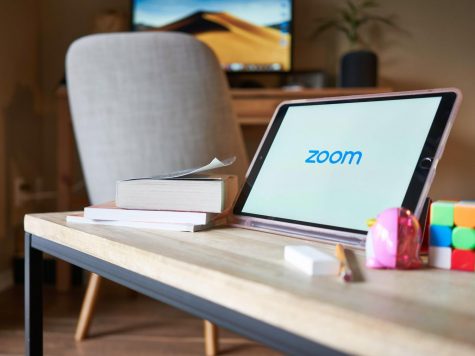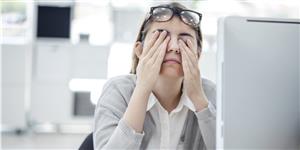UGH…MY EYES HURT
The switch to online/virtual event has caused a lot of individuals to experience screen fatigue.

Last updated October 23, 2020
As if we did not already spend the majority of our time on our phones, iPads, laptops, etc before the pandemic, we are now consumed with technology. The outbreak of COVID-19 has caused us to shift all our daily lifestyles to online. We are part of a world where Zoom calls and remote learning have become the new normal.
According to The Washington Post, many individuals have reported a drastic increase in their screen time since quarantine began. Due to the amount of time spent strained in front of a screen, many people have experienced fatigue, headaches, eye strain, and loss of human connection.
In order to improve our experiences, we must “ensure good ergonomic practices in the use of computers” (Syracuse University). Some nonmonetary examples to prevent screen fatigue include making the font text bigger and dimming the screen’s brightness. We must be aware that blinking often will also cut through the unconscious strain our eyes experience.
Whether or not you are a student who must participate in Zoom classes for the majority of the day, it is crucial to take breaks away from the screen every hour. The American Optometric Association suggests the best way to take breaks is by following the 20/20/20 rule: look away from the screen for 20 minutes, look at an object at a minimum distance of 20 feet, for at least 20 minutes. This simple rule will prevent eye strain for many individuals.
Additionally, it is important to change your setting every hour. Taking a walk outside, breathing fresh air, and returning to your work space can both clear your thoughts and allow your mind a break. Changing your work area can also impact your performance on tasks and help you stay energized during long and lingering days. By moving from a desk to a kitchen table or even room to office, we can permit our minds to regenerate. Stretch breaks are also vital to allow efficient blood flow!
Angelo Adam ‘21 says, “I find myself constantly drinking water during class in order to be attentive in each class. I also change scenery after every class period to keep myself excited and positive of my surroundings. It is crucial to find what works for each person in order to combat screen fatigue.”
We must each find what works for each of us personally. Each one of us can find habits and ways to stay refreshed and healthy amidst the circumstances we are facing.


